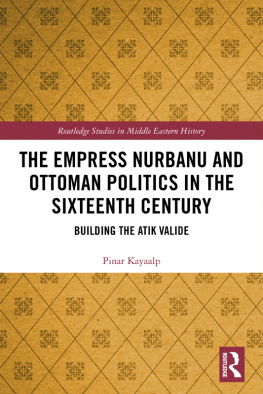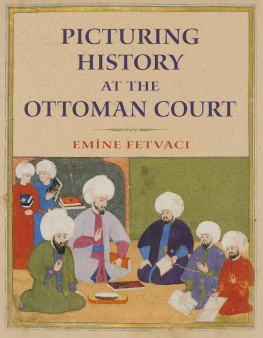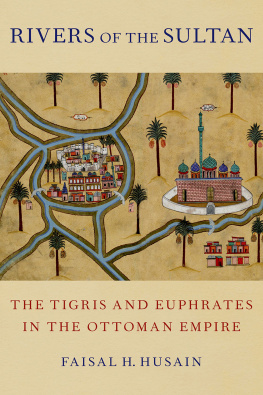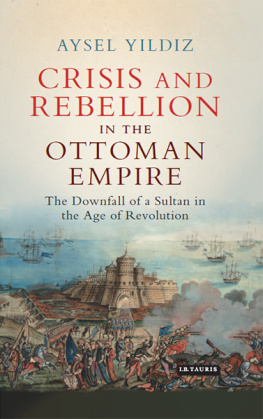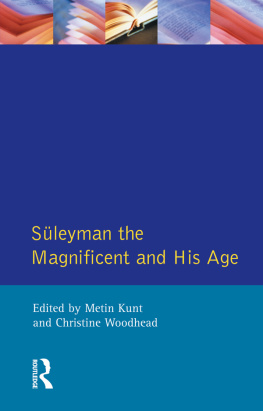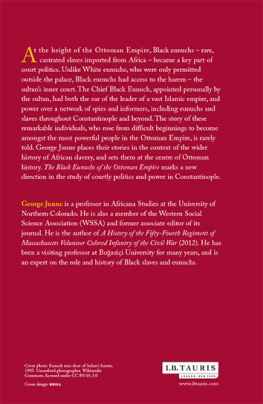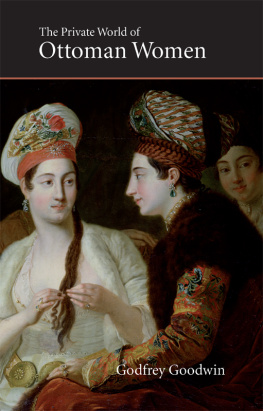Pinar Kayaalp - The Empress Nurbanu and Ottoman Politics in the 16th Century: Building the Atik Valide
Here you can read online Pinar Kayaalp - The Empress Nurbanu and Ottoman Politics in the 16th Century: Building the Atik Valide full text of the book (entire story) in english for free. Download pdf and epub, get meaning, cover and reviews about this ebook. year: 2018, publisher: Routledge, genre: Romance novel. Description of the work, (preface) as well as reviews are available. Best literature library LitArk.com created for fans of good reading and offers a wide selection of genres:
Romance novel
Science fiction
Adventure
Detective
Science
History
Home and family
Prose
Art
Politics
Computer
Non-fiction
Religion
Business
Children
Humor
Choose a favorite category and find really read worthwhile books. Enjoy immersion in the world of imagination, feel the emotions of the characters or learn something new for yourself, make an fascinating discovery.
- Book:The Empress Nurbanu and Ottoman Politics in the 16th Century: Building the Atik Valide
- Author:
- Publisher:Routledge
- Genre:
- Year:2018
- Rating:3 / 5
- Favourites:Add to favourites
- Your mark:
The Empress Nurbanu and Ottoman Politics in the 16th Century: Building the Atik Valide: summary, description and annotation
We offer to read an annotation, description, summary or preface (depends on what the author of the book "The Empress Nurbanu and Ottoman Politics in the 16th Century: Building the Atik Valide" wrote himself). If you haven't found the necessary information about the book — write in the comments, we will try to find it.
Nurbanu (15251583) is one of the most prominent yet least studied royal women of the Ottoman dynasty. Her political and administrative career began when she was chosen as the favorite concubine of the crown prince Selim. Nurbanus authority increased when her son Murad was singled out as crown prince. By 1574, when her son, Murad III became Sultan, Nurbanu officially took on the title of Valide Sultan, or Queen Mother, holding the highest office of the imperial harem until her death in 1583.
This book concentrates on the Atik Valide mosque complex, which constitutes the architectural embodiment of Nurbanus prestige, power and piety. The arrangement of the chapters is designed to enable readers to reconsider Ottoman imperial patronage practices of the late sixteenth century using the architectural enterprise of a remarkable woman as the common thread. Chapter 1 provides a general history of the wqaf institution to inform on its origins and evolution. Chapter 2 looks closely at the political dealings of Nurbanu, both in the domestic and the international sphere, building upon research concerning Ottoman royal women and power dynamics of the sixteenth and seventeenth centuries. Chapter 3 presents a textual analysis of the written records pertaining to Nurbanus imperial mosque complex. Chapter 4 examines the distinctive physical qualities and functional features of the Atik Valide within its urban context. The book concludes by assessing to what extent Nurbanu was involved in the representation of her power and piety through the undertaking of her eponymous monument.
Providing a complete study of the life and times of this Ottoman empress, this book will appeal to students and scholars of Ottoman studies, gender studies, history of art and architecture, Islamic studies, history of religion and Middle Eastern studies.
Pinar Kayaalp: author's other books
Who wrote The Empress Nurbanu and Ottoman Politics in the 16th Century: Building the Atik Valide? Find out the surname, the name of the author of the book and a list of all author's works by series.

